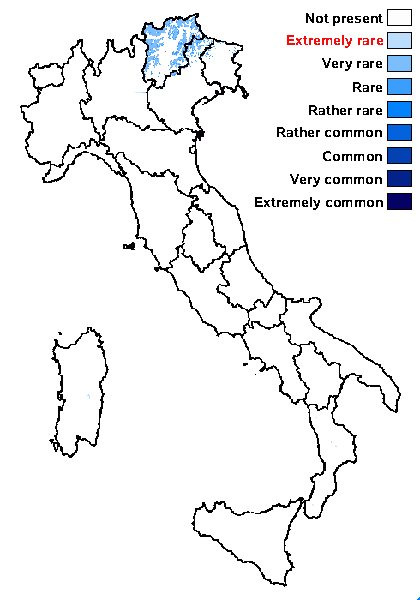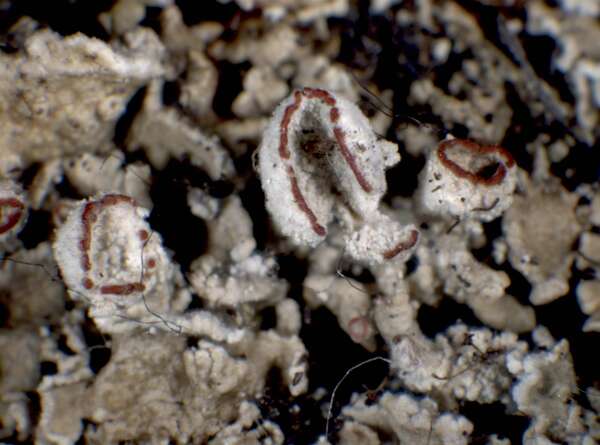Cladonia diversa S. Stenroos
(Asperges ex) S. Stenroos (in Ahti & Stenroos), Bot. Complut., 36: 32, 2012.
Synonyms:
Distribution: N - Frl, Ven (TSB 7825), TAA (Nascimbene & Caniglia 2000). C - Sar (Burgaz & al. 2020). S - Cal (Puntillo 1996, Burgaz & al. 2020).
Description: Primary thallus squamulose, persistent, the squamules ascending, middle-sized, 1-4 mm long and wide, variable in form, rounded or a little indented, yellowish green above, white or often yellowish towards the base beneath. Podetia goblet-shaped, hollow inside, yellowish-green to glaucescent and olive-coloured, often more or less orange at the dying base, 2(-3) cm tall, bearing broad, regular, sometimes marginally proliferating, up to 9 mm wide cups gradually or abruptly flaring into a short, 1-2 mm thick stalk which is often richly microsquamulose at the base; surface of podetia areolate-granulose (phyllidiate) but not sorediate. Apothecia frequent, scarlet red, convex, developing on the margins of cups. Asci 8-spored, clavate, thickened at apex, with a K/I+ blue tholus and a K/I+ strongly blue outer gelatinous sheath, Cladonia-type. Ascospores 1-celled, hyaline, ellipsoid. Pycnidia scarlet red to black, semi-immersed along the margins of cups, with a red jelly. Conidia hyaline, curved. Photobiont chlorococcoid. Spot tests: K-, C-, KC+ yellow, P-, UV-. Chemistry: usnic acid and zeorin (the latter visible as a layer of crystals in herbarium specimens), often also porphyrilic, conporphyrilic and isousnic acids; rhodocladonic acid in apothecia and pycnidia.Note: related to C. coccifera and C. pleurota, and with a similar ecology, but perhaps more bound to humid habitats, probably more widespread in the Alps near or above treeline.
Growth form: Fruticose
Substrata: soil, terricolous mosses, and plant debris
Photobiont: green algae other than Trentepohlia
Reproductive strategy: mainly asexual, by soredia, or soredia-like structures (e.g. blastidia)
Commonnes-rarity: (info)
Alpine belt: very rare
Subalpine belt: rare
Oromediterranean belt: extremely rare
Montane belt: absent
Submediterranean belt: absent
Padanian area: absent
Humid submediterranean belt: absent
Humid mediterranean belt: absent
Dry mediterranean belt: absent

Predictive model
Herbarium samples
Growth form: Fruticose
Substrata: soil, terricolous mosses, and plant debris
Photobiont: green algae other than Trentepohlia
Reproductive strategy: mainly asexual, by soredia, or soredia-like structures (e.g. blastidia)
Commonnes-rarity: (info)
Alpine belt: very rare
Subalpine belt: rare
Oromediterranean belt: extremely rare
Montane belt: absent
Submediterranean belt: absent
Padanian area: absent
Humid submediterranean belt: absent
Humid mediterranean belt: absent
Dry mediterranean belt: absent

Predictive model
| Herbarium samples |
 INDEX FUNGORUM
INDEX FUNGORUM
 GBIF
GBIF
 DOLICHENS
DOLICHENS




